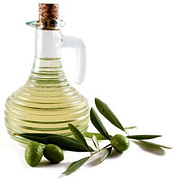Olive Oil Joins the Fight
By Dr. David Holland
Olives have been part of the Mediterranean diet for years. They are concentrated in monounsaturated fats, are a good source of vitamin E and contain many phytonutrient compounds including polyphenols and flavonoids, which have beneficial anti-inflammatory properties.
In addition to the well-established benefits of olives, olive oils and olive products, recent studies indicate that olives may be the future in protecting against superbugs. The spread of two major offenders, MRSA (methicillin-resistant Staphylococcus aureus) and the HIV virus, can be slowed by a compound from olive oil and its leaves. What once were rare germs dealt with only by specialists are now invading the clinics and shopping malls in our communities. The HIV virus has gained a comfort zone with most practitioners. "Oh, you have HIV. Keep seeing your infectious- disease specialist," is what we say without a raised eyebrow. In contrast, MRSA knows no such boundaries. It will visit you whether you like it or not, and it is not satisfied with merely staying in the realm of the infectious-disease specialist. Luckily, we have within our reach the naturally occurring antimicrobial properties of the olive and its constituent plant parts, which may help draw some boundaries for these germs.
 MRSA - the "resistant Staph" bacteria - has taken on two forms: a hospital-acquired form and a community-acquired form (known as CA-MRSA). Each carries unique antibiotic-resistance properties but is resistant to the common, beta-lactam antibiotics that have historically been used for treating skin infections. Risk factors for the hospital-acquired form of MRSA include a history in the past year of hospitalization, diabetes, renal failure, surgery, admission to a nursing facility or previous MRSA infection, among others, while CA-MRSA may have no typical, antecedent risk factors. People and pets may be carriers for either type of MRSA. The germ is passed by the touch of a hand, so extra care should be taken to recognize what the infection looks like and prevent the spread of such infection to other family members, clients and co-workers. The most common appearance of a CA-MRSA infection is a lesion that is often mistaken for a "spider bite," a pustule or pimple, or ulcerated lesion that was once a pustule, with surrounding red, warm, painful and swollen tissue. If an abscess is present, the patient should proceed to a doctor to have it surgically drained, and the fluid should be cultured. At that point, antibiotics such as Bactrim or doxycycline are initiated. There is some debate about what to do with other household contacts once this person goes home - should everyone take antibiotics? Is hand washing good enough?
MRSA - the "resistant Staph" bacteria - has taken on two forms: a hospital-acquired form and a community-acquired form (known as CA-MRSA). Each carries unique antibiotic-resistance properties but is resistant to the common, beta-lactam antibiotics that have historically been used for treating skin infections. Risk factors for the hospital-acquired form of MRSA include a history in the past year of hospitalization, diabetes, renal failure, surgery, admission to a nursing facility or previous MRSA infection, among others, while CA-MRSA may have no typical, antecedent risk factors. People and pets may be carriers for either type of MRSA. The germ is passed by the touch of a hand, so extra care should be taken to recognize what the infection looks like and prevent the spread of such infection to other family members, clients and co-workers. The most common appearance of a CA-MRSA infection is a lesion that is often mistaken for a "spider bite," a pustule or pimple, or ulcerated lesion that was once a pustule, with surrounding red, warm, painful and swollen tissue. If an abscess is present, the patient should proceed to a doctor to have it surgically drained, and the fluid should be cultured. At that point, antibiotics such as Bactrim or doxycycline are initiated. There is some debate about what to do with other household contacts once this person goes home - should everyone take antibiotics? Is hand washing good enough?
The fact is many people are carriers for such bacteria and they may exhibit no symptoms at all; hence the fact that hand washing remains the single most important means of preventing the spread of contagious or infectious germs. CA-MRSA typically causes skin infections (though some infections may be systemic). With harmful germs, stopping the spread is obviously the key. Bacteria multiply and spread. HIV viruses multiply and spread. What are some ways, beyond hand washing, that we can help prevent the spread? The cherished olive, Olea europaea, whose oil, fruit and leaves already infiltrate our medical literature with beneficial properties against cancer and heart disease, can be our friend in this fight against infectious diseases as well.
Olive leaves are particularly beneficial because they contain a broad range of antimicrobial substances. At least seven compounds, all of which possess "unusual" combined antibacterial and antifungal properties when tested in a lab against several common human pathogens, have been found in olive leaves. One of these compounds is called "oleuropein," which is found in concentrated form in many over-the-counter olive-leaf products. However, these products deny the other six compounds (caffeic acid, verbascoside, luteolin 7-O-glucoside, rutin, apigenin 7-O-glucoside and luteolin 4'-O-glucoside) an equal opportunity to do their job. A whole olive-leaf product would be superior to a customized, concentrated form that emphasizes or touts a particular, standardized concentration of the one single agent.

